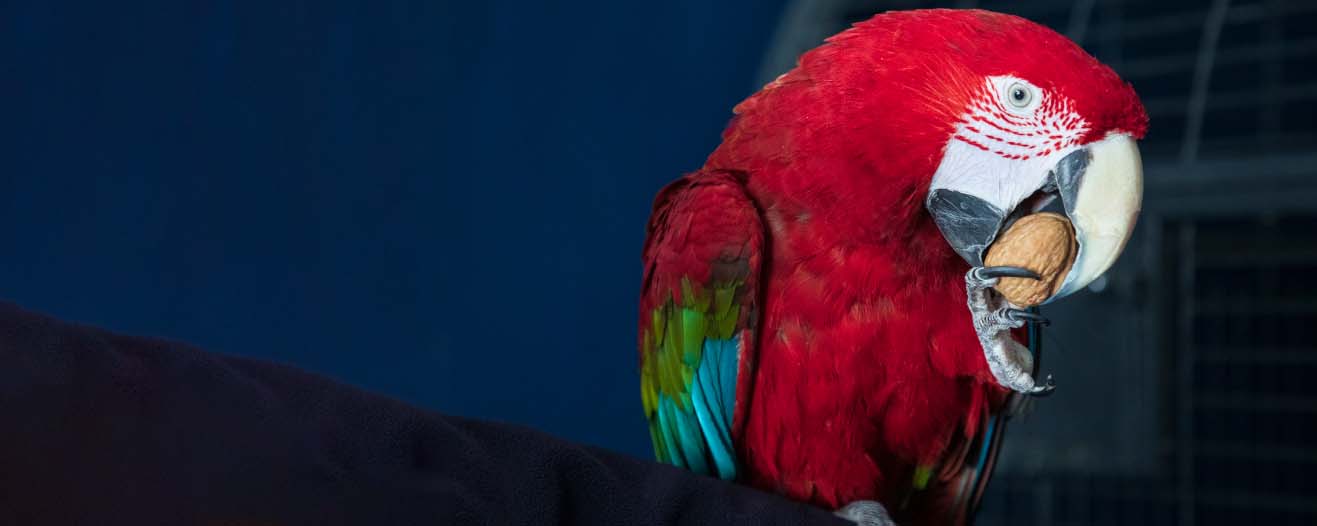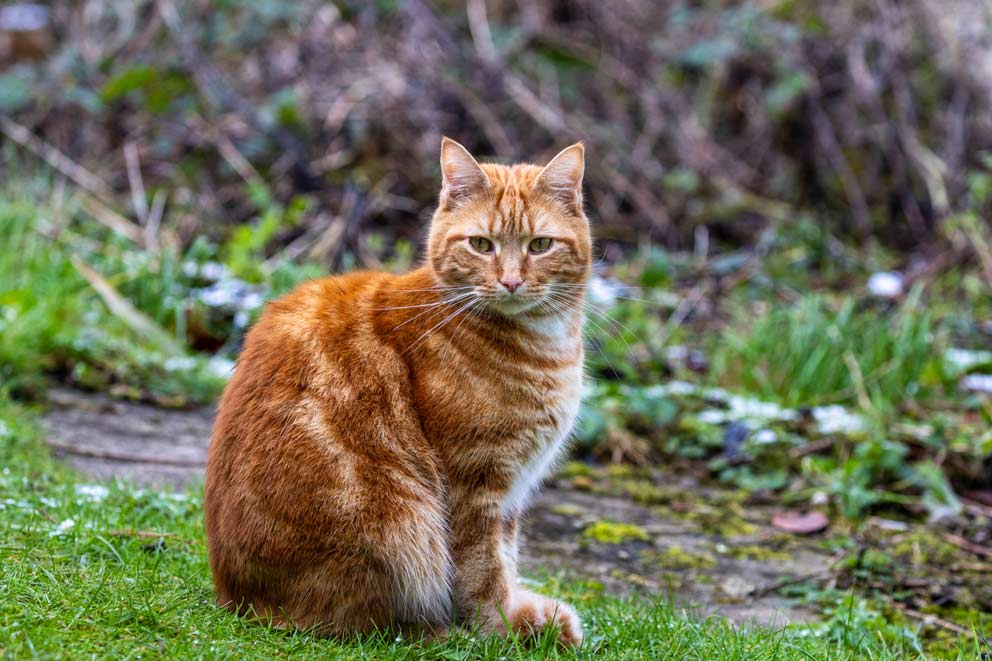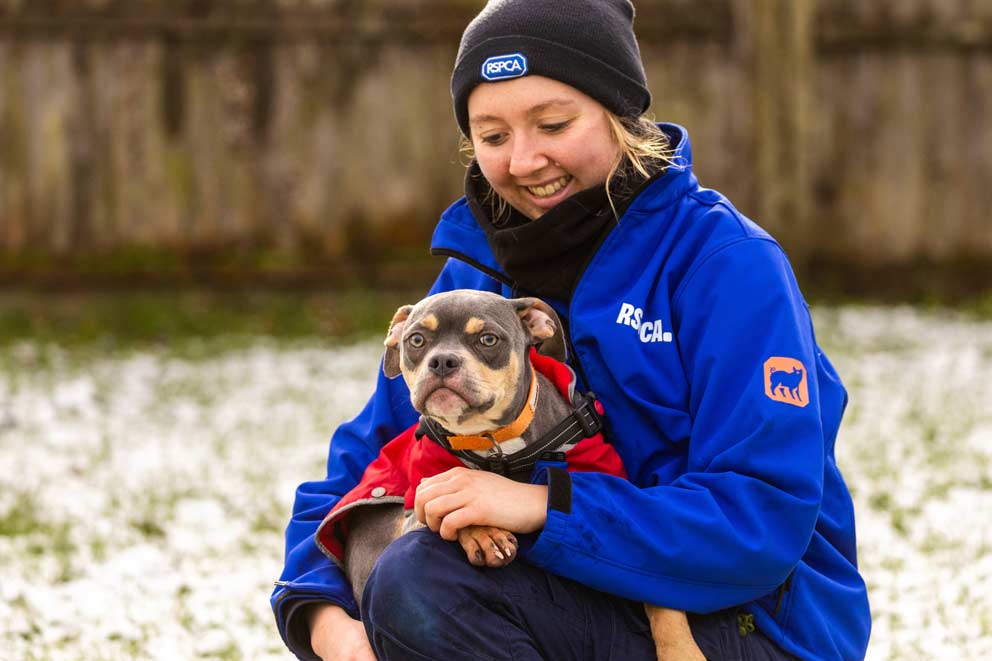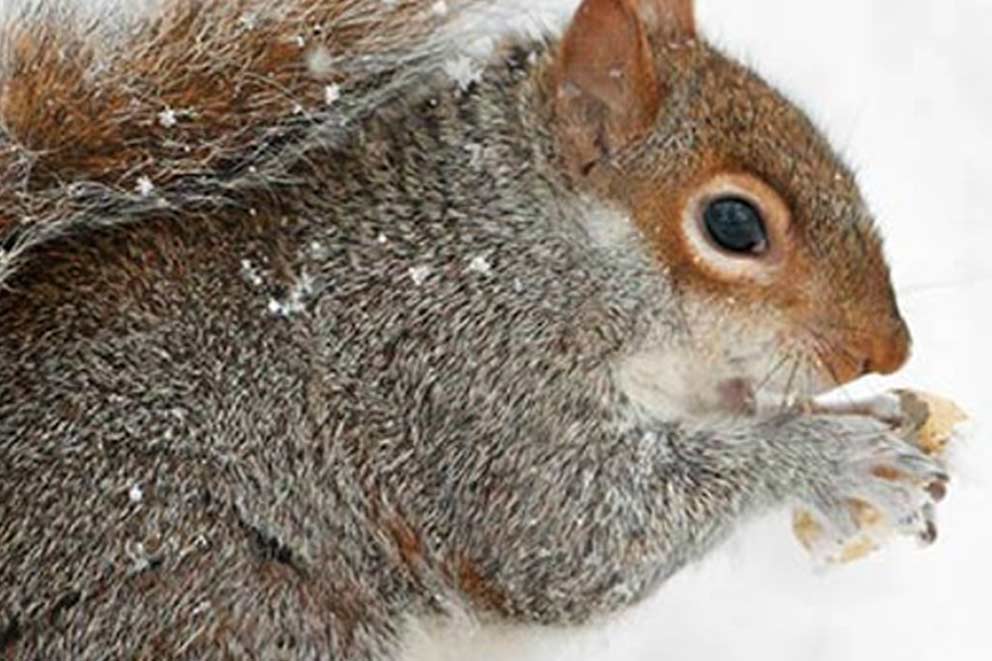How to help wild birds in cold weather
The winter months are a challenging time for birds, with lower temperatures and limited food sources. On this page, you’ll learn how the cold and dark weather affects bird health and welfare, and how you can help birds make it through the winter.

Jump to:
How cold and dark weather affects birds
While some birds migrate to warmer climates as the cold seasons arrive, many stay in the UK – even if that means struggling through until spring.
Autumn and winter in the UK aren’t as dramatic as an arctic snowfall, yet we still see a decline in the survival of birds in cold weather. When the temperature drops drastically, birds like robins, wrens, starlings, wood pigeons and many others, feel the effects and often suffer for it.
Like us, birds are warm-blooded (endothermic), meaning their bodies generate heat and maintain a constant temperature, even in the colder months. However, compared to some mammals over the winter, many birds don’t lay down as much fat, as this would impact their ability to fly and make them vulnerable to predation. These birds only store up small deposits of fat each day – enough to keep them warm for the night.
¹2024 British Ornithologists’ Union’s ‘British List.’
Did you know?
There are 640 species of wild birds in the UK as of 2024¹.
²BTO, ‘Garden birds in winter.’

How to help birds survive in cold weather
With limited food, cold and wet shelters, and frozen water sources, birds have to work even harder to survive during these colder months.
By feeding birds in winter, providing warm shelter and fresh water, you can improve their chances of not just surviving, but thriving through all seasons, helping them rest and replenish when they need it.
How to keep birds warm in the cold weather
The best way to help birds stay warm in colder weather is to provide them somewhere dry and warm to roost and shelter in your garden. Things like:
- Dense evergreen hedges and shrubs: Like yew or holly (both have lots of berries for birds to feast on).
- Deciduous trees (good for sheltering in without leaves): Like hawthorn and honeysuckle.
- Evergreen trees: Coniferous trees like pines and furs.
- Climbing plants: Like ivy and wisteria.
- Nesting boxes, roosting boxes and bird houses: You could even try making your own bird boxes.
Winter substances poisonous to birds
Never use antifreeze or salt to thaw out water, such as frozen ponds, frozen bird baths or anything that animals drink out of. This can be fatal. If you’re concerned an animal has been poisoned, contact your vet.
What to feed garden birds in the winter
Colder weather means a lot less food and access to running water – there are fewer berries and seeds around, and fewer daylight hours to find them in.
By leaving out food and fresh water for garden birds, or planting native food plants in your garden, you’re helping them to not only build up their energy reserves to stay warm for the cold nights ahead, but also reduce the energy they burn in searching for food.
Bird food
The best and most nutritious bird foods include:
- Fruit: Like apples, pears, berries and soft fruits.
- Suitable seeds and grains: Like nyjer, millet, oats, mixed seeds and sunflower seeds, which are calorie-rich.
- Peanuts: They must be unsalted, fresh and don't contain aflatoxin (a poison caused by fungus mould). Young chicks might choke on whole peanuts, so always put them in feeders with a smaller mesh.
- Raisins and sultanas: They’re energy-rich and a source of natural sugars.
- Food scraps: Cooked pasta, cooked rice, boiled potatoes, mild grated cheese, roast potatoes, dry porridge oats and uncooked and unsalted bacon rind.
- Net-free fat balls or suet balls: These attract a wide range of species and provide a great boost of calories.
- Insects: Such as mealworms or waxworms.
- Pumpkins: When offered safely off the ground in bird feeders, birds can enjoy freshly-cut sections of pumpkin and seeds – but make sure to remove anything that isn’t eaten quickly so it doesn't get mouldy or attract rodents (find out how to safely prepare and share your leftover pumpkins here). It’s important to note that pumpkins can be harmful to wild animals if they’re decorated or rotting – including birds, badgers, hedgehogs and foxes – as they can spread disease.
Alternatively, you could make your own high-energy, high-fat bird treats.
Important: If you have cats or dogs, be careful with grapes, sultanas, raisins and some artificial sweeteners, as they can be toxic to them.
Bird feeders
The best way to leave out bird food is in a hanging bird feeder – you can hang several all around your garden. You could also try making your own eco bird feeder using all natural materials.
When finding somewhere to put your bird feeder, there are a few things to bear in mind:
- Choose somewhere up high: Keep food off the ground, well above the height a cat can reach, and higher than anywhere a cat can perch, such as on walls and branches.
- Choose somewhere out in the open: Put bird feeders in open areas, so that there’s no cover nearby for a cat to stalk prey.
- Use a metal pole: If the feeder is on a pole, make sure it’s something a cat can’t climb. Metal is a good option.
- Use a steep roof: Choose a bird house that has a steep roof to prevent a cat from sitting on top.
Bird water
When the weather gets really cold, water sources can freeze. Adding a bird bath to your garden is a great way to provide clean water, and some bird baths come with heating options to prevent the water from freezing. You could also try creating your own garden pond – it’s a perfect place for birds to drink and bathe, and you never know what other wildlife might appear there, too.
If you already have a bird bath and it freezes, defrost it using warm water – but pour slowly.
Cleaning bird feeders and bird baths
Make sure to change the water in the bird bath daily, and keep your feeders clean – by washing them weekly with mild detergents like washing-up liquid – to reduce the spread of disease. Remember to wear gloves!
Foods to avoid feeding birds
Avoid feeding birds dried coconuts, cooked porridge oats, milk, cooking fat and mouldy or salted food. If you already have, and you’re worried about the bird’s wellbeing, contact your nearest vet.
How birds make it through the winter
Some UK birds are migratory, including swallows, swifts, common chiffchaffs and black-tailed godwits. Migration in the UK peaks during the spring and summer, when winged visitors return after their winter away, and then in the autumn, when they depart again for the next winter.
But only some UK bird species migrate – others, often called ‘resident birds,’ roost right here year round, spending all seasons near their summer breeding spots (like house sparrows, blue tits, magpies, wood pigeons, and so many others).
While you’re likely to see many of these resident birds over the winter – especially our festive friend and national bird, the robin – other birds migrate to the UK from even colder places.
Some birds you might spot in your garden when it’s cold include:
- Shivering (shivering will stop if they become severely cold)
- Drowsiness and confusion
- Pale gums
- Loss of coordination and consciousness/collapse
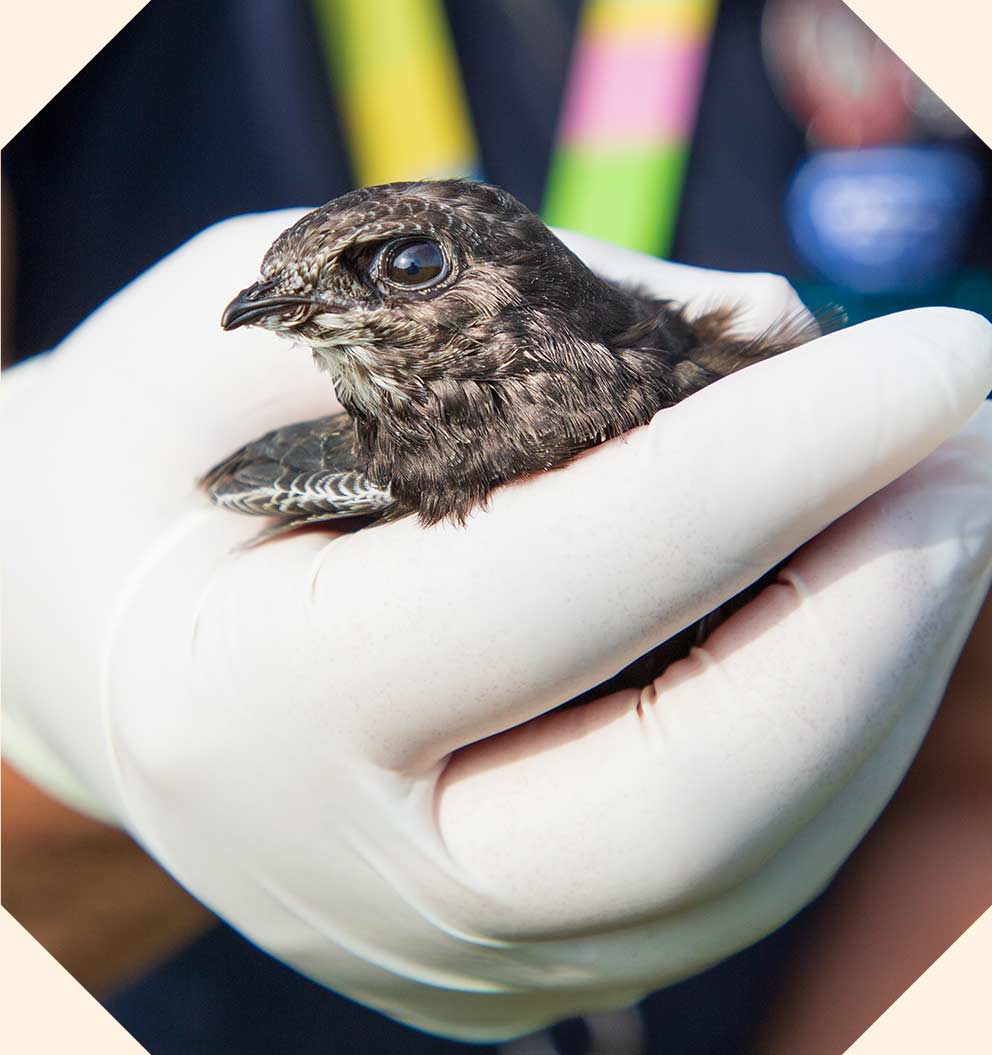
Birds during the day
During cold and dark weather seasons like winter, some birds flock together in the daytime to improve their chances of survival – as a group, they’re better able to locate food and there’s strength in numbers should a predator threaten them.
Long periods of exposure to the cold can be disastrous for garden birds, weakening them and depleting their energy reserves. Like humans, birds also release body heat, more so during the winter. This means they need to eat more food over the colder months to help keep them warm. Birds spend the majority of the day searching for food to help them build up fat stores to burn.
Small birds, like blue tits and goldcrests, can lose up to 5% of their body mass during the night, and because they typically only eat enough to see them through a single night, they must consume as much as 30% of their body weight during the day to survive the longer, colder nights. Other birds, like jays, head to gardens and parks searching for food to store, like acorns.
Birds during the night
Some birds stay warm through the winter nights by huddling together and conserving body heat. Roosting together at night also helps protect them against predators. Different species roost in different places – pied wagtails roost in trees in towns, whereas robins like to roost in gardens.
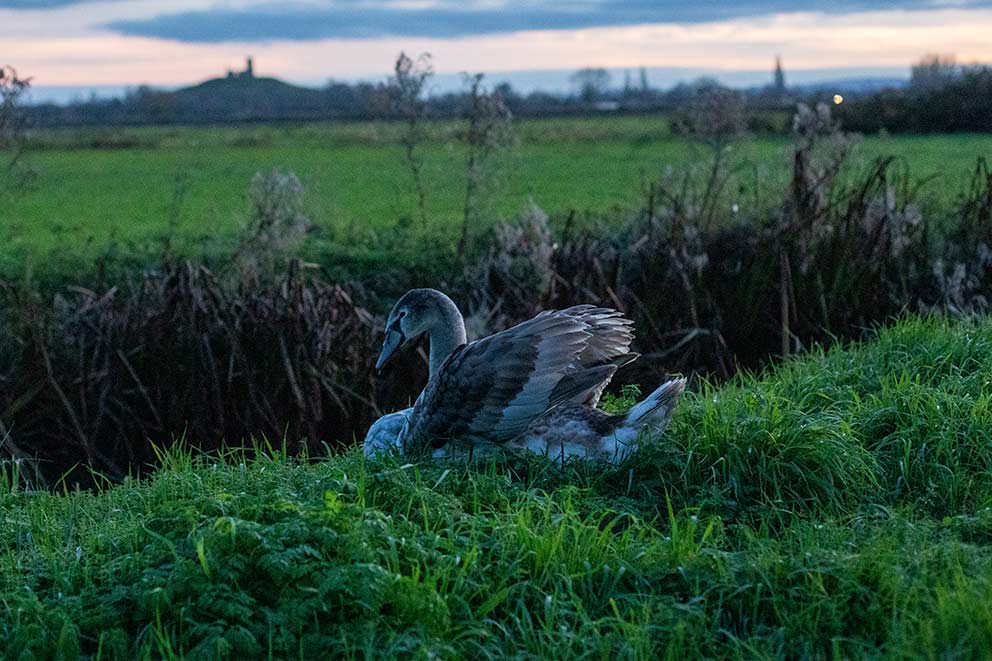
How do birds keep warm in the winter?
A bird has various types of feathers, each with a specific function. Some are used for flight – like wing and tail feathers – whilst others are sensory, like filoplume feathers. Then there are those, like contour, semiplume and downy feathers, that help to keep the bird warm. This reduces the risk of birds getting too cold at night, in the rain or in the winter.
-
Insulating
-
Feather fluffing
-
Waterproofing
Semiplume features are small, fluffy and very soft, which enables them to trap a layer of insulating air around the bird’s body, kept warm by their body heat.
Small birds like robins or blue tits fluff up their feathers when it gets cold, which helps reduce heat loss. During the winter, some birds also grow more of the soft, downy feathers closest to their skin, which helps them stay warm.
Birds’ contour feathers have a waterproof tip and a downy base, arranged in an overlapping pattern so that each waterproof tip of one feather covers the downy base of another. This method of waterproofing is essential for those that are regularly submerged in water, like seabirds or waterfowl, and also protect other bird species against the cold rain.
How to keep dogs healthy in winter
Some dogs are more at risk of falling ill in the winter. If yours is in the list below, keep a closer eye on them and speak to your vet about how to best protect and care for them:
- Flat-faced dogs — brachycephalic dogs often experience breathing difficulties due to their shortened and narrowed airways. Make sure their vaccinations are up to date and schedule regular vet checkups, where you can discuss weight management and a routine of steady exercise.
- Dogs with short coats — animals with shorter coats may be more likely to feel the effects of cold weather. Keep them cosy with a coat for walks, and a snuggly blanket in the home.
- Dogs with arthritis — like humans, cold weather can increase joint pain in animals with arthritis. Warm and active can reduce the risk of flare-ups.
- Dogs with heart issues — if your dog has a known heart condition, limit their time outside to a maximum of 20 minutes at a time in the winter as low temperatures can place excessive strain on their cardiovascular system.
Common winter health issues for dogs
Look out for signs of common winter health issues in your dog and learn what to do if you're worried:
Symptom: If your dog is slower getting up when it’s wet and cold, this could be a sign of osteoarthritis.
Action: Take them to the vet, who may advise the use of heat and massage to help relieve the pain.
Symptom: If your dog has skin discolouration, swelling, blisters or ulcers on their ears, tail, foot pads, or nose, this could be a sign of frostbite.
Action: Move your dog to a warm, dry place. If the symptoms don’t improve, take them to a vet who may prescribe antibiotics or topical treatment.
Symptom: If you see your dog shivering, or in a sluggish state, this could be a symptom of hypothermia.
Action: Move them to a warm place using blankets and hot water bottles if you have them. Use warm water in hot water bottles to avoid burns. Always cover the bottles with a thick towel or blanket, especially for chewers. If you suspect your dog has hypothermia, contact a vet immediately.
How to keep dogs warm in winter
We don’t advise keeping dogs outside in any weather. Meeting the needs of dogs when they're kept outside is very hard — even more so in very low temperatures. To reduce the risk of health issues, owners should make sure their dogs have a clean, comfortable and dry sleeping area with a safe heat source so the temperature does not drop below 10°C (50°F).
If it’s very cold, or you’re outside for a prolonged period of time, you can buy a special coat or jumper to keep your dog warm on walks. Make sure it’s a good and comfortable fit, and that your dog can still behave normally (for example, that they can go to the toilet easily).
If your dog does get wet, dry them fully, by using a blow dryer, a drying coat or towel before they go to sleep. Damp fur can make your dog feel cold, as well as lead to skin irritation, matting, and infections.
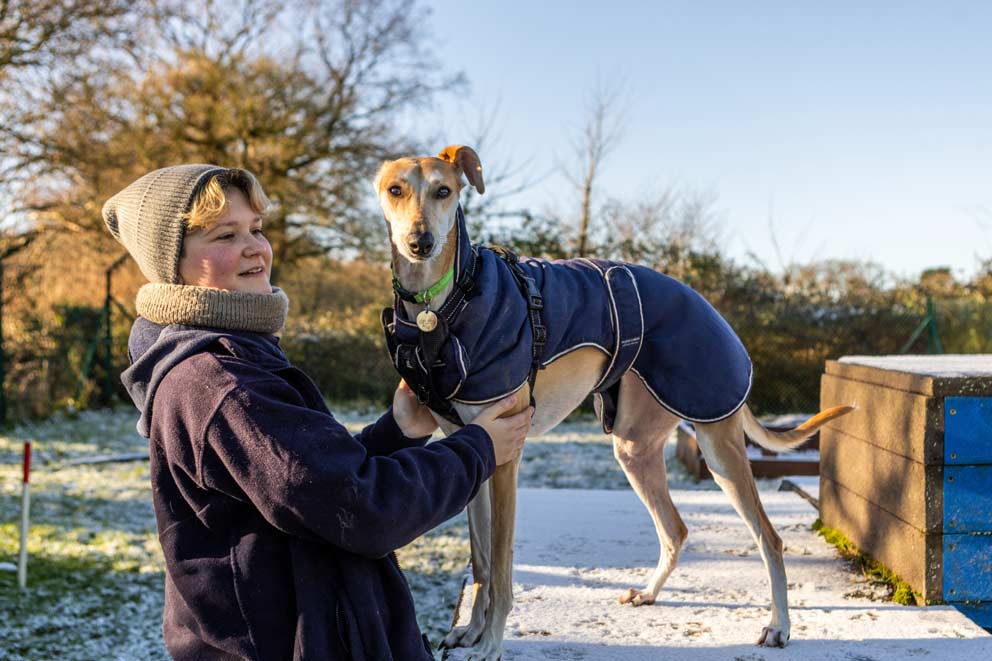
How to keep dogs safe in winter
Follow these tips to keep your dog safe in winter:
- Be seen — try to stick to well-lit places and get reflective or LED gear for you and your dog, so you can be seen by vehicles when walking in the dark.
- Be chipped — ensure your dog is microchipped and the details are up to date in case they slip away from you in poor weather conditions.
- Wipe down — thoroughly wipe down your dog’s paws and tummy after walks to remove grit and rock salt, which are poisonous to dogs
- Snow go — snow can conceal deep or unsafe patches of earth, so keep your dog on the lead.
- Avoid icy ponds — keep dogs away from frozen ponds and lakes — thin ice may break under their weight.
Common winter poisons for dogs
Keep your dog away from these common winter poisons and call a vet immediately if you suspect they’ve ingested any.
- Antifreeze — the active ingredient in antifreeze, Ethylene glycol, can cause kidney failure and death.
- Alabama rot — a disease that damages the blood vessels in the skin and kidneys, can cause visible sores on the skin and kidney failure.
- Rock salt — a mixture of salt and grit is used to help de-ice roads in winter. Ingestion can cause thirst, vomiting, lethargy, and in severe cases convulsions and kidney damage.
Never ‘watch and wait’
If you suspect your dog's been poisoned, contact a vet immediately.

